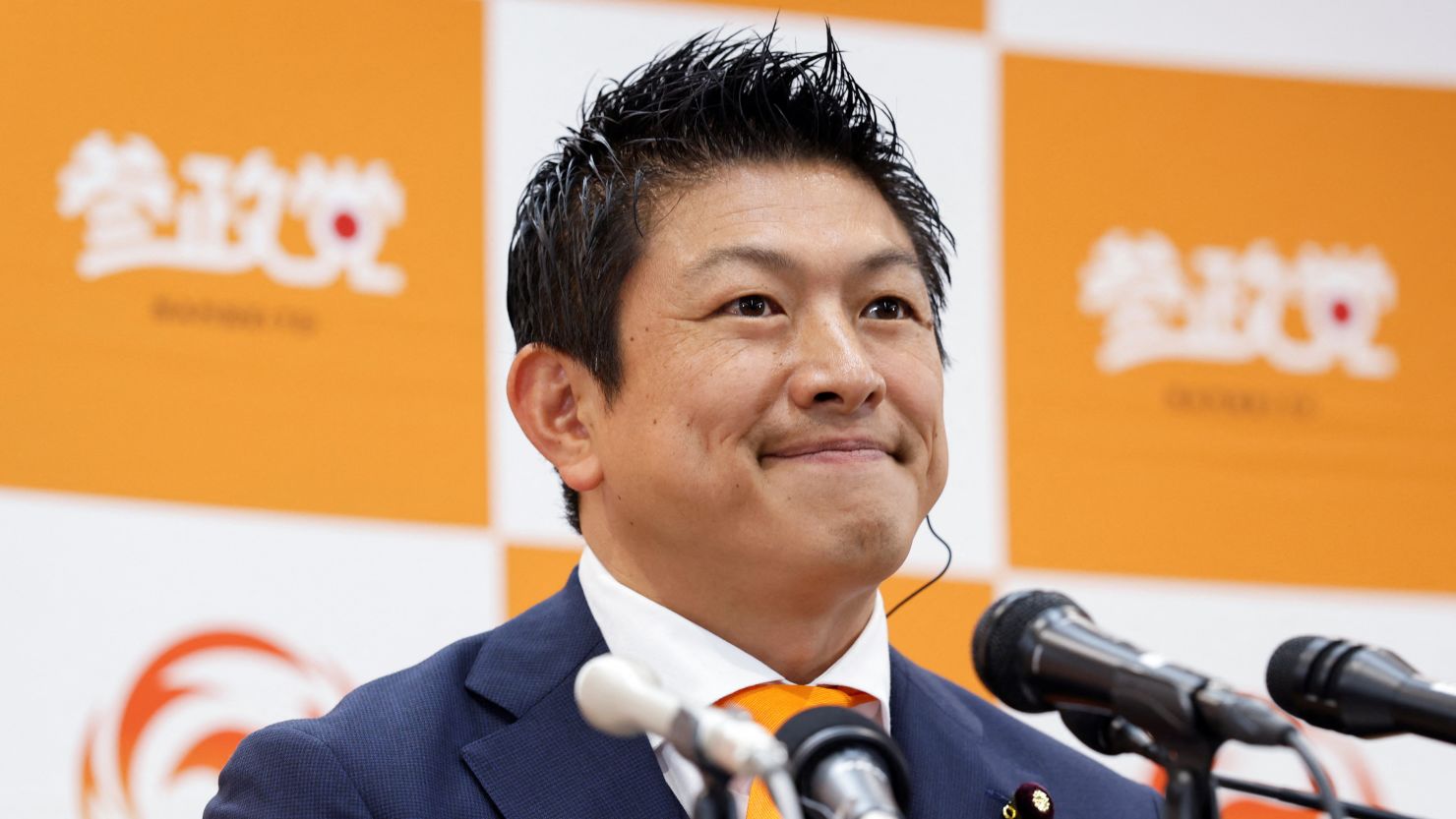Health
Right-Wing Populist Party Sanseito Secures Major Gains in Japan

The right-wing populist party, Sanseito, achieved a surprising victory in Japan’s recent parliamentary elections, capturing 14 seats in the upper house. This marks a significant increase from the single seat it previously held, according to Japan’s public broadcaster NHK. The party’s leader, Sohei Kamiya, a former supermarket manager, founded Sanseito during the height of the coronavirus pandemic in 2020, using the platform of YouTube to rally support.
Sanseito’s campaign, centered around the slogan “Japanese First,” resonated with voters who expressed concerns over issues such as immigration and the impact of tourism on local communities. This unexpected success is putting pressure on Prime Minister Shigeru Ishiba and his ruling Liberal Democratic Party (LDP), which has now lost its majority in both the upper and lower houses of parliament.
Emergence of Sanseito
Sanseito’s rise is particularly notable given its unconventional origins. Kamiya utilized social media to gather supporters, eventually securing victories in local assemblies. As of July 2023, the party’s YouTube channel boasted over 460,000 subscribers. Initially, the party gained attention for promoting conspiracy theories related to vaccinations during the pandemic. However, as the elections approached, Sanseito shifted focus to its “Japanese First” campaign, which highlighted growing frustrations over immigration and overtourism.
Japan, the world’s fourth-largest economy, has faced challenges related to an aging population and declining birth rates. While the country traditionally maintained strict immigration controls, efforts to attract foreign workers and international tourists have led to a significant increase in the foreign resident population, which rose from 2.23 million to 3.77 million over the past decade. Despite this growth, foreign residents still represent only 3% of Japan’s total population of over 120 million people.
Concerns have surfaced in various communities regarding the influx of tourists and foreign residents, particularly in areas struggling to manage the influx of visitors and the associated strains on local resources. In response to these challenges, the Japanese government recently established a task force to address public concerns about the increasing number of foreigners.
Political Implications and Future Challenges
Sanseito’s platform also addresses economic issues, such as stagnant wages and rising costs of living. In a speech, Kamiya emphasized the difficulties facing the Japanese populace, stating, “Right now, Japanese people’s lives are getting harder and harder.” He cautioned that while he welcomed tourists, increased reliance on foreign labor could negatively impact local wages and contribute to crime.
The party advocates for setting caps on the number of foreign residents in municipalities, imposing stricter immigration policies, and limiting benefits for non-citizens. Additionally, it has proposed stronger security measures, expanded tax cuts, and a focus on renewable energy, alongside a push for enhanced defense capabilities in response to perceived threats from neighboring nuclear-armed countries.
The comparisons between Sanseito and other right-wing populist movements, such as Donald Trump’s MAGA campaign and Germany’s AfD party, highlight a shared sentiment of anti-foreign rhetoric. Joshua Walker, head of the US-based non-profit Japan Society, noted, “Sanseito has become the talk of the town… It’s more of a weakness of the LDP and Ishiba than anything else.”
Despite criticisms labeling Sanseito’s platform as xenophobic, Kamiya attempted to moderate some of its more controversial proposals leading up to the election to attract a broader voter base, including women. Following the election results, he expressed confidence, claiming, “The public came to understand that the media was wrong and Sanseito was right.”
The electoral outcome has left Ishiba’s coalition in a precarious position. Having lost control of the lower house in October 2022, the LDP experienced its first loss of majority in 15 years. In a press conference on July 10, Ishiba acknowledged the upper house results as a severe judgement from the electorate and extended apologies to party members. Despite the turmoil, he indicated intentions to maintain his leadership role, citing ongoing economic discussions with the United States regarding impending tariffs.
As Japan navigates this political landscape, the implications of Sanseito’s rise and the challenges facing the LDP will undoubtedly shape the future of the country’s governance.
-

 Technology5 months ago
Technology5 months agoDiscover the Top 10 Calorie Counting Apps of 2025
-

 Health3 months ago
Health3 months agoBella Hadid Shares Health Update After Treatment for Lyme Disease
-

 Health3 months ago
Health3 months agoErin Bates Shares Recovery Update Following Sepsis Complications
-

 Technology4 months ago
Technology4 months agoDiscover How to Reverse Image Search Using ChatGPT Effortlessly
-

 Technology1 month ago
Technology1 month agoDiscover 2025’s Top GPUs for Exceptional 4K Gaming Performance
-

 Technology3 months ago
Technology3 months agoElectric Moto Influencer Surronster Arrested in Tijuana
-

 Technology5 months ago
Technology5 months agoMeta Initiates $60B AI Data Center Expansion, Starting in Ohio
-

 Technology5 months ago
Technology5 months agoRecovering a Suspended TikTok Account: A Step-by-Step Guide
-

 Health4 months ago
Health4 months agoTested: Rab Firewall Mountain Jacket Survives Harsh Conditions
-

 Lifestyle5 months ago
Lifestyle5 months agoBelton Family Reunites After Daughter Survives Hill Country Floods
-

 Technology4 months ago
Technology4 months agoHarmonic Launches AI Chatbot App to Transform Mathematical Reasoning
-

 Health3 months ago
Health3 months agoAnalysts Project Stronger Growth for Apple’s iPhone 17 Lineup





















